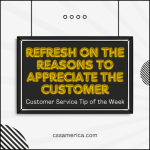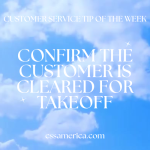By now, you’ve probably heard how Netflix has lost 1 million subscribers (about 4%) of their customer base due to 100% of their own decision-making. They decided to split their DVD rental service from their video streaming service. This increased the fee for having both services by about 60%.
They thought they’d lose subscribership, and they lost more than they thought. But this was part of a long-term strategy, one that they’re sticking to for the time being.
If you ignore the obvious customer anger at the price increase and the risk of this strategy (which will probably be an M.B.A. case study in a couple years), there’s a seemingly minor issue that’s created a lot of unexpected backlash.
Customers who keep both services will now receive 2 bills which they have to pay separately.
Yes, Netflix now has created more work for its customers. This is the opposite of great customer service.
We often talk about reducing the “hassle factor” for your customers, the need to make it easy for customers to do business with you. Netflix has taken a strategic change in their business model and made it more of a hassle for customers to do business with them.
Start thinking about your company through the eyes of your customer. In what ways is it a hassle for your customers to access information from your company, to get answers to their questions, to get through to a representative, to purchase a new service, to request a refund, or to pay a bill?
Make sure your great strategies don’t create great barriers to your customer’s satisfaction.
Listen to our latest podcast of “Stepping Up Service” on The MESH Network at http://themesh.tv/stepping-up-service/
Read our New Book – “Ask Yourself…Am I GREAT at Customer Service?” http://www.amigreatat.com/
Interested in improving your company’s customer service? See more at our new website! http://www.cssamerica.com/





















